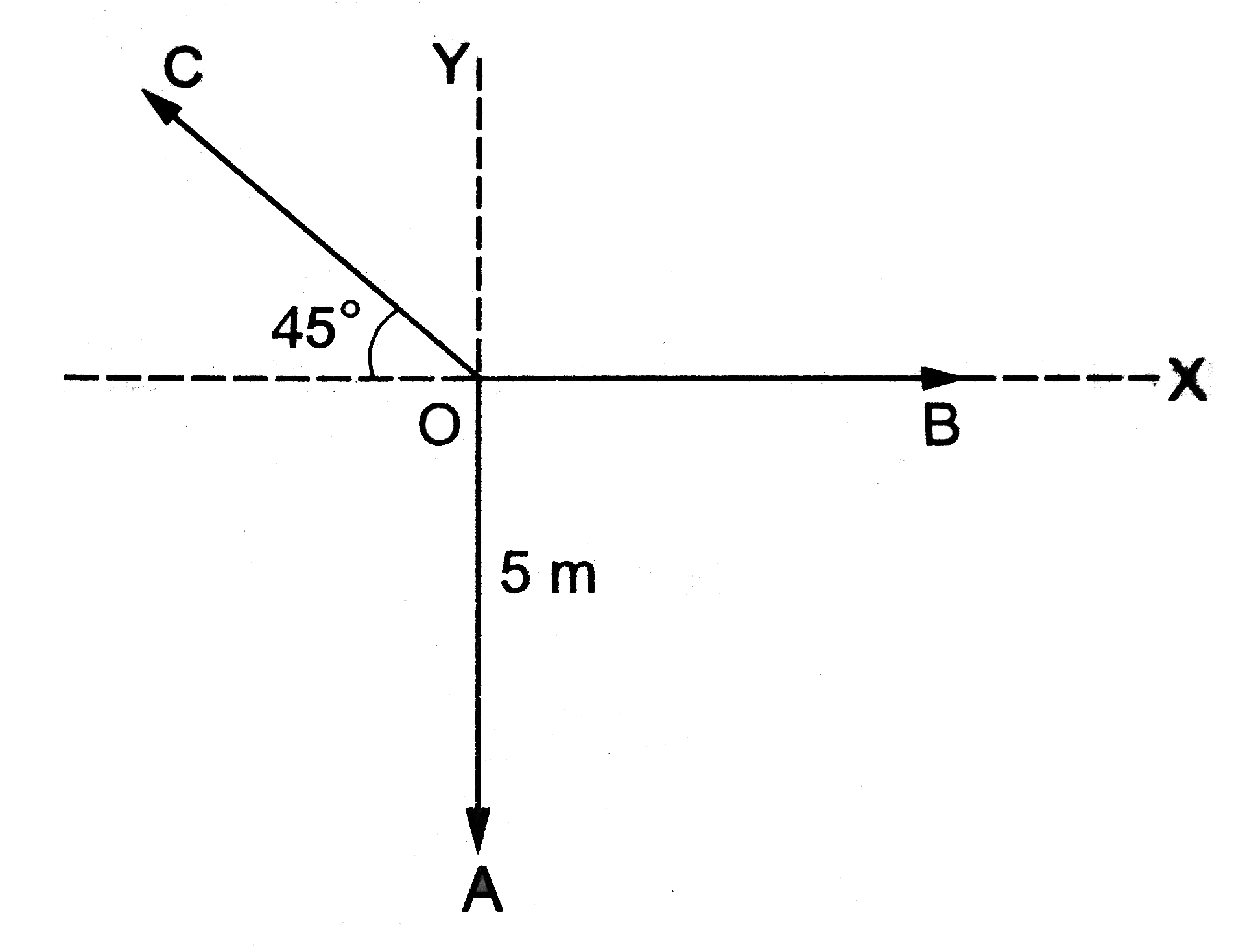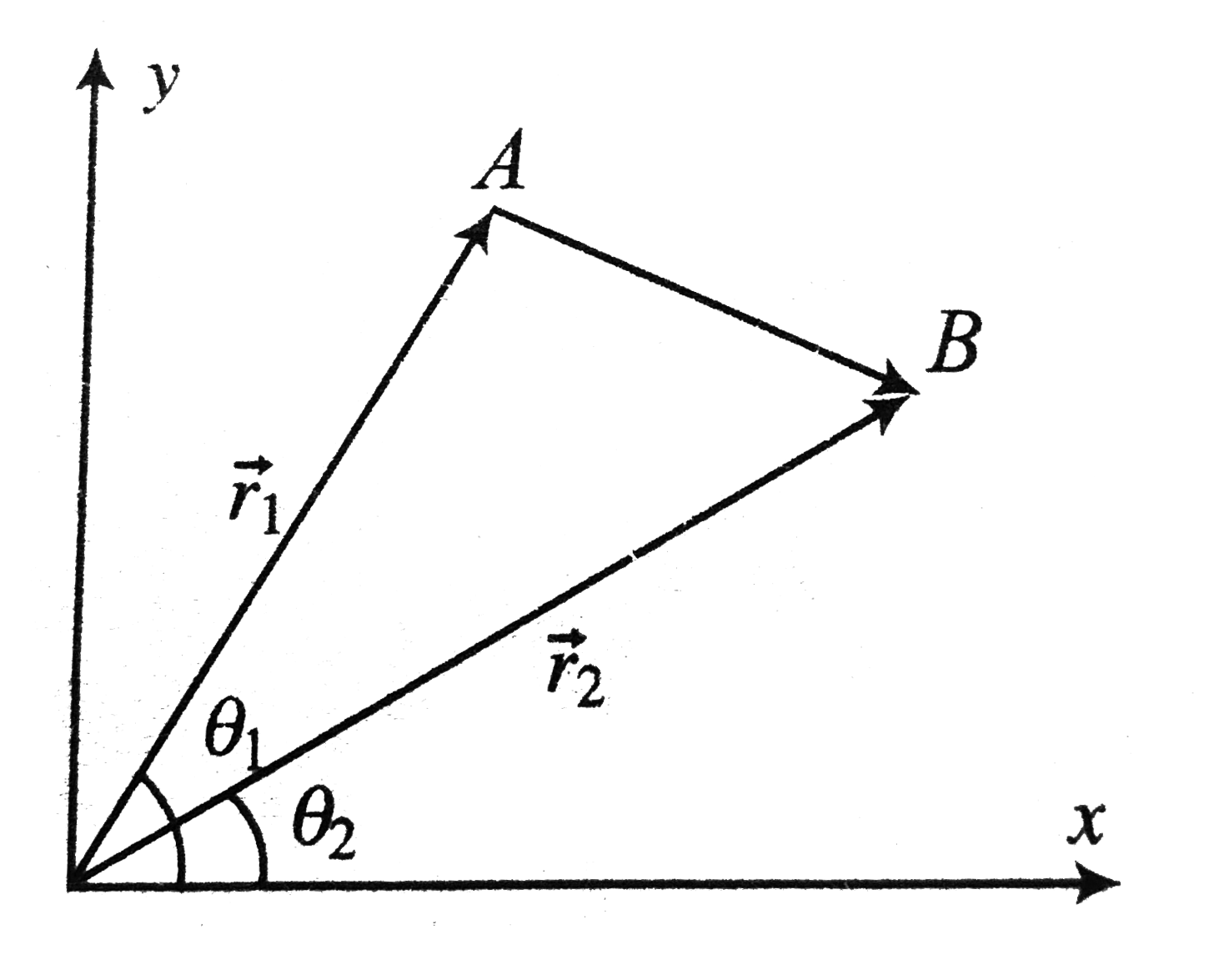A vector and make angles of and respectively with the X-axis. The magnitudes of these vectors are and respectively. Find their resultant vector.
The correct Answer is:
To find the resultant vector of →A and →B, we will follow these steps:
Step 1: Identify the given information
- Magnitude of vector →A=5m
- Angle of vector →A=20° with the X-axis
- Magnitude of vector →B=12m
- Angle of vector →B=110° with the X-axis
Step 2: Calculate the components of each vector
We can resolve each vector into its X and Y components using trigonometric functions.
For vector →A:
- \( A_x = A \cdot \cos(\theta_A) = 5 \cdot \cos(20°) \)
- \( A_y = A \cdot \sin(\theta_A) = 5 \cdot \sin(20°) \)
For vector →B:
- \( B_x = B \cdot \cos(\theta_B) = 12 \cdot \cos(110°) \)
- \( B_y = B \cdot \sin(\theta_B) = 12 \cdot \sin(110°) \)
Step 3: Calculate the components
Using the values of cosine and sine for the angles:
- \( A_x = 5 \cdot \cos(20°) \approx 5 \cdot 0.9397 \approx 4.6985 \)
- \( A_y = 5 \cdot \sin(20°) \approx 5 \cdot 0.3420 \approx 1.7100 \)
- \( B_x = 12 \cdot \cos(110°) \approx 12 \cdot (-0.3420) \approx -4.1040 \)
- \( B_y = 12 \cdot \sin(110°) \approx 12 \cdot 0.9397 \approx 11.2764 \)
Step 4: Sum the components to find the resultant vector
Now we can find the resultant vector components:
- \( R_x = A_x + B_x = 4.6985 - 4.1040 \approx 0.5945 \)
- \( R_y = A_y + B_y = 1.7100 + 11.2764 \approx 12.9864 \)
Step 5: Calculate the magnitude of the resultant vector
Using the Pythagorean theorem:
- \( R = \sqrt{R_x^2 + R_y^2} = \sqrt{(0.5945)^2 + (12.9864)^2} \)
- \( R \approx \sqrt{0.3534 + 168.6774} \)
- \( R \approx \sqrt{169.0308} \approx 13.0 \, m \)
Step 6: Find the direction of the resultant vector
To find the angle \( \theta_R \) of the resultant vector with respect to the X-axis, we use:
- \( \theta_R = \tan^{-1}\left(\frac{R_y}{R_x}\right) = \tan^{-1}\left(\frac{12.9864}{0.5945}\right) \)
Calculating this gives:
- \( \theta_R \approx \tan^{-1}(21.85) \approx 87.5° \)
Final Result
The resultant vector has a magnitude of approximately 13.0 m and makes an angle of approximately 87.5° with the X-axis.
---
- Magnitude of vector →A=5m
- Angle of vector →A=20° with the X-axis
- Magnitude of vector →B=12m
- Angle of vector →B=110° with the X-axis
We can resolve each vector into its X and Y components using trigonometric functions.
- \( A_x = A \cdot \cos(\theta_A) = 5 \cdot \cos(20°) \)
- \( A_y = A \cdot \sin(\theta_A) = 5 \cdot \sin(20°) \)
- \( B_x = B \cdot \cos(\theta_B) = 12 \cdot \cos(110°) \)
- \( B_y = B \cdot \sin(\theta_B) = 12 \cdot \sin(110°) \)
Using the values of cosine and sine for the angles:
- \( A_x = 5 \cdot \cos(20°) \approx 5 \cdot 0.9397 \approx 4.6985 \)
- \( A_y = 5 \cdot \sin(20°) \approx 5 \cdot 0.3420 \approx 1.7100 \)
- \( B_y = 12 \cdot \sin(110°) \approx 12 \cdot 0.9397 \approx 11.2764 \)
Now we can find the resultant vector components:
- \( R_x = A_x + B_x = 4.6985 - 4.1040 \approx 0.5945 \)
- \( R_y = A_y + B_y = 1.7100 + 11.2764 \approx 12.9864 \)
Using the Pythagorean theorem:
- \( R = \sqrt{R_x^2 + R_y^2} = \sqrt{(0.5945)^2 + (12.9864)^2} \)
- \( R \approx \sqrt{0.3534 + 168.6774} \)
- \( R \approx \sqrt{169.0308} \approx 13.0 \, m \)
To find the angle \( \theta_R \) of the resultant vector with respect to the X-axis, we use:
- \( \theta_R = \tan^{-1}\left(\frac{R_y}{R_x}\right) = \tan^{-1}\left(\frac{12.9864}{0.5945}\right) \)
- \( \theta_R \approx \tan^{-1}(21.85) \approx 87.5° \)
The resultant vector has a magnitude of approximately 13.0 m and makes an angle of approximately 87.5° with the X-axis.
Similar Questions
Knowledge Check
- Question 1 - Select One
Two vectors →Aand→B inclined at an angle θ have a resultant →R which makes an angle α with →A. If the directions of →Aand→B are interchanged, the resultant will have the same
AdirectionBmagnitudeCdirection as well as magnitudeDnone of these
The resultant of the two vectors →a and →b of magnitudes 6 and 10 respectively is at right angles to the vector →a Find their resultant and also the angle between the given vectors.
View SolutionA vector →A of length 10 units makes an angle of 60∘ with a vector →B of length 6 units. Find the magnitude of the vector difference →A−→B & the angles with vector →A.
View SolutionThe magnitude of x and y components of →A are 7 and 6 respectively . Also , the magnitudes of x and y components of →A+→B are 11 and 9 respectively . Calculate the magnitude of vector →B
View SolutionTwo vectors →A and →B are added. Prove that the magnitude of the resultant vector cannot be greater than (A+B) and smaller than (A−B) or (B−A).
View SolutionThe sum of the three vectors shown in figure is zero. Find the magnitudes of the vectors −−→OBand−−→OC.
 View Solution
View SolutionIn a two diamensional motion of a particle, the particle moves from point A, with position vector →r1 to point B, with position vector →r2. If the magnitudes of these vectors are, respectively, →r=3 and r2=4 and the angles they make with the x-axis are θ1=75∘ and θ2=15∘, respectively, then find the magnitude of the displacement vector.
 View Solution
View SolutionTwo vectors →Aand→B inclined at an angle θ have a resultant →R which makes an angle α with →A. If the directions of →Aand→B are interchanged, the resultant will have the same
View Solution

